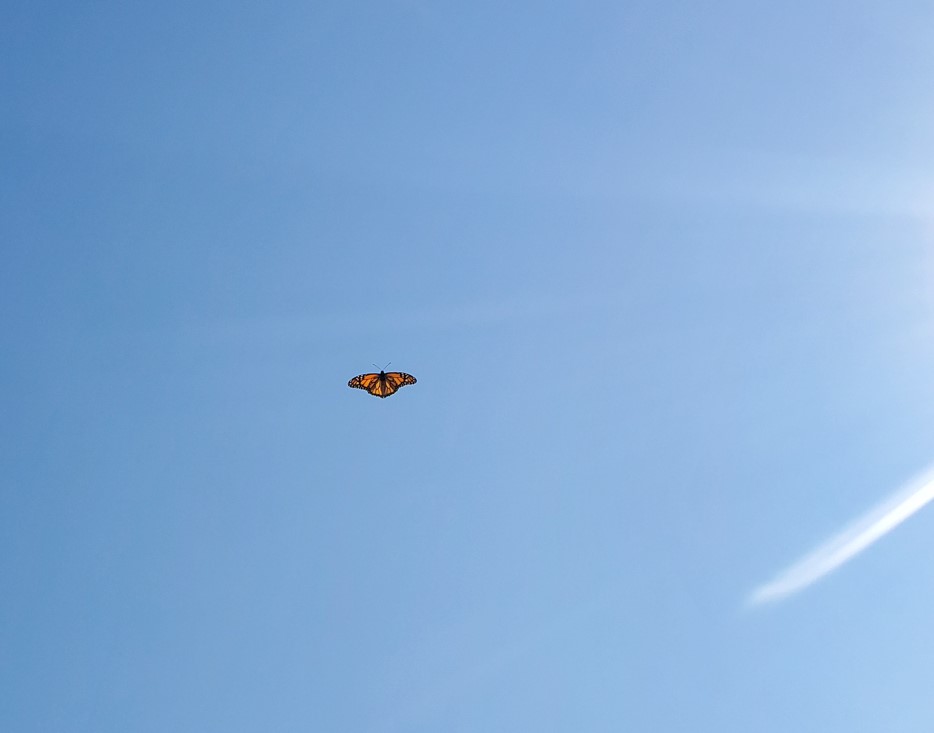The last of the monarchs left yesterday. They are born, dry-off, test their wings and then fly away. Green to black to orange, black and white – there is now no color save yellow – yellow grass, yellow tarweed, yellow sunflowers, yellow creek flowers. Yellow is the Fall, a time of maturity, a time of harvest, filling us like a cornucopia. I harvest joy, not crops, from knowing that something as remarkable as a butterfly can exist. My project has matured attracting monarchs at their journey beginning and ending. I have witnessed flights, egg laying, caterpillars large and small, silk spinning, “J” making, chrysalises and births to flights again. I am full. Fall has filled me.



In my life, I never thought I would be a midwife to monarchs. In truth, they don’t need me. They’ve been doing their thing and surviving well without me. Unimpressed with that knowledge, I monitored them daily to ensure their chrysalises were there, their foundations were intact, and that everything was a-ok. When they were born, I watched them even closer to make sure they were able to gain a strong footing.
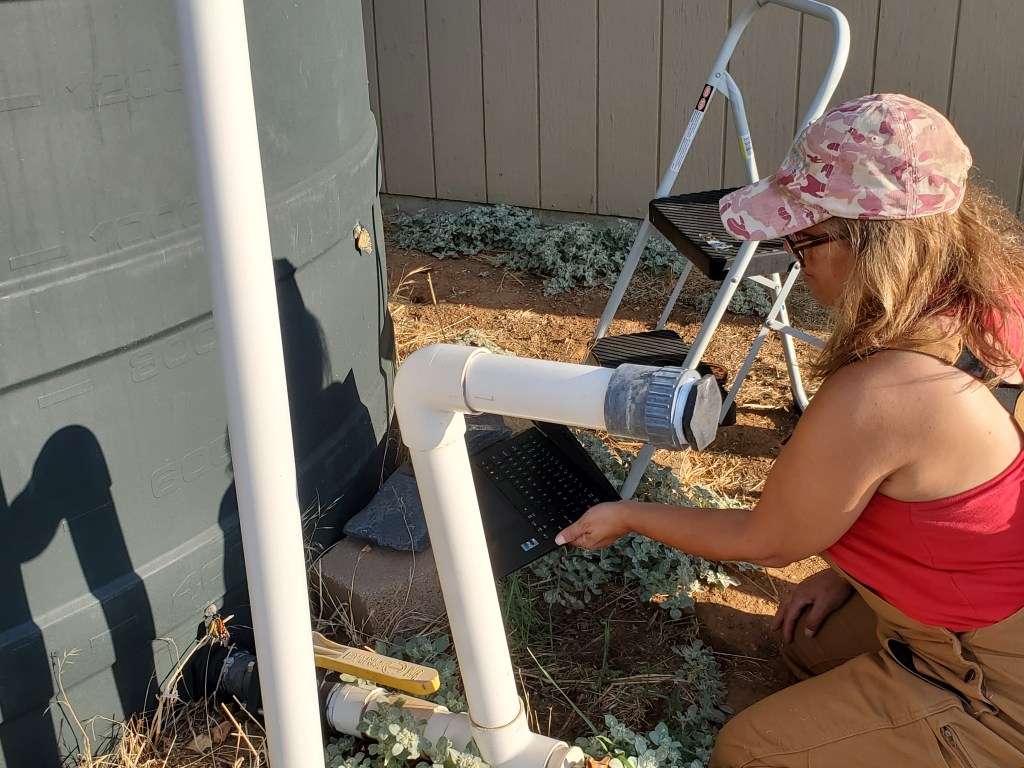
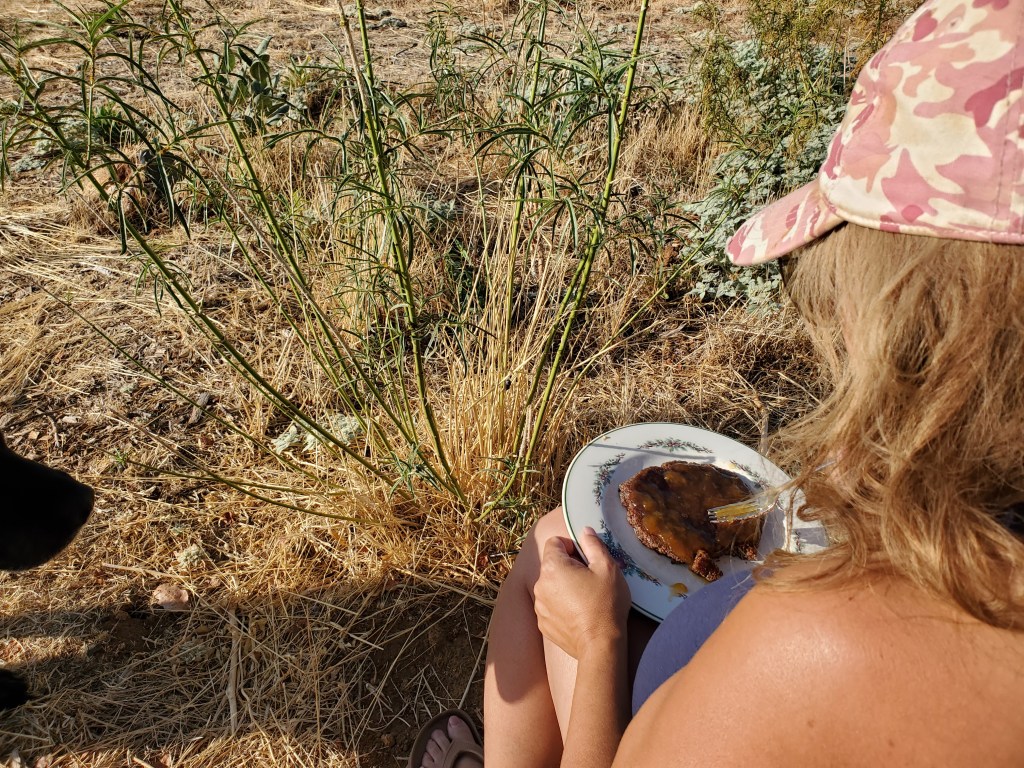
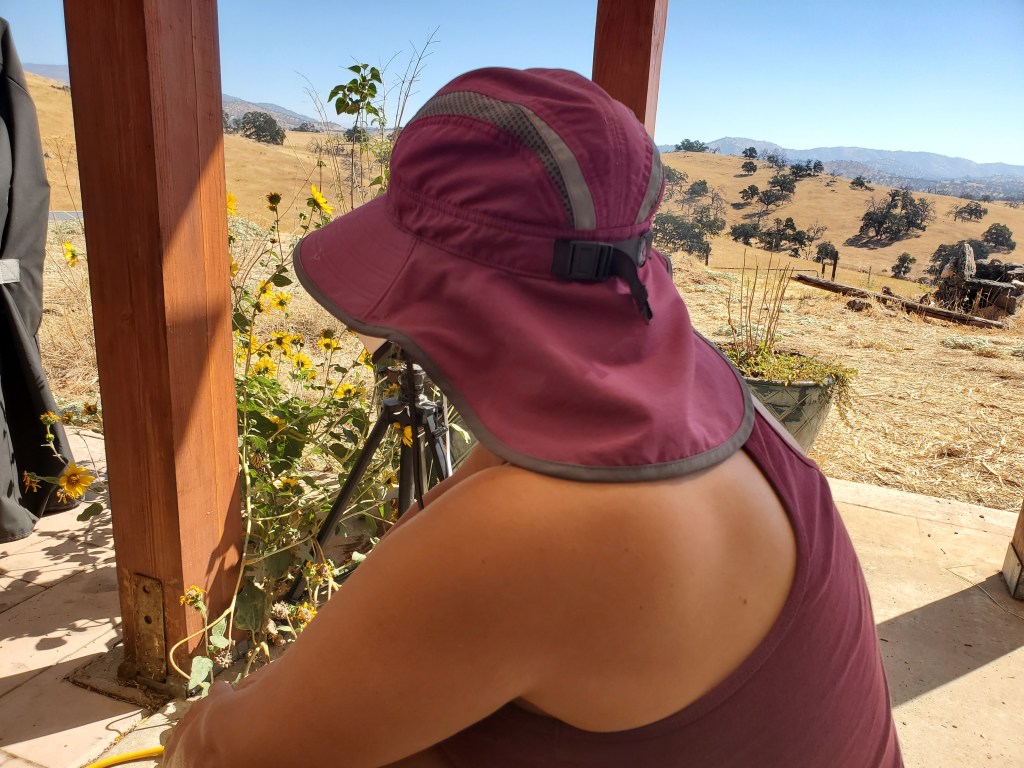
Glad I was there; monarch #2, the closest chrysalis to the ground, did not have as much space between the tank to which its chrysalis was attached and the retaining wall adjacent to the tank. She rolled out of her chrysalis, then latched to it, then a move to more solid footing, and she fell. I watched her thinking she would find footing, but the space was small and the dried grass too short and flimsy. There she wiggled on her side trying to gain purchase on something, legs grasping at the air hoping to find something to cling to. Quickly, I broke off a stem from a dead sunflower and carefully held it to her, close in her vicinity, but not near her delicate, still wet wings. I did not want to chance an error. She grabbed on, and I hoisted her carefully in the air allowing her to hang her wings toward the ground so they could unfurl, expand and become strong for her impending journey. I was captivated. After my brain was released from the haze of wonder at this magnificent creature only inches from me, I realized that I now “owned” this lifeline I threw for the 3 to 4 hours it takes for the wings to dry. Didn’t think of that when I jumped to the rescue. I stood there, holding this stick with a glistening jewel at its end, contemplating what I could do to ensure her safety, and my relief. I tried to encourage her to step onto the larger dead stick of the sunflower remains. She wouldn’t have it. Fortunately, there was a soil-filled container with moist dirt that made it easy, yet sturdy, for me to plant the stick in, slowly, carefully. It worked. We both were secure.
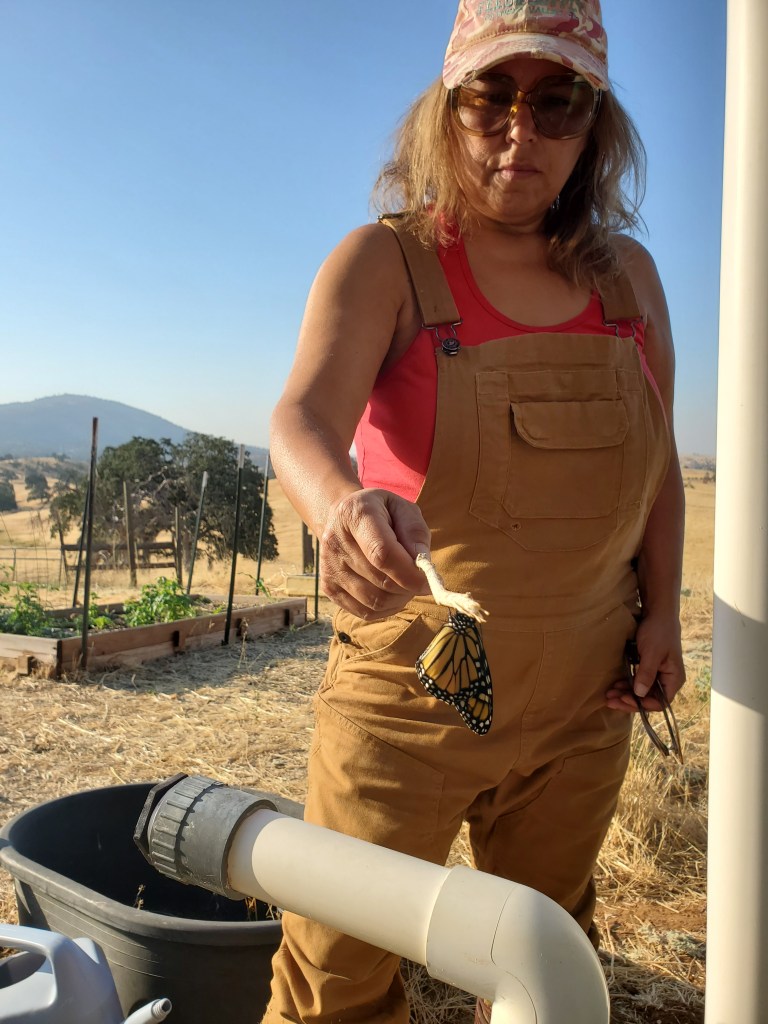
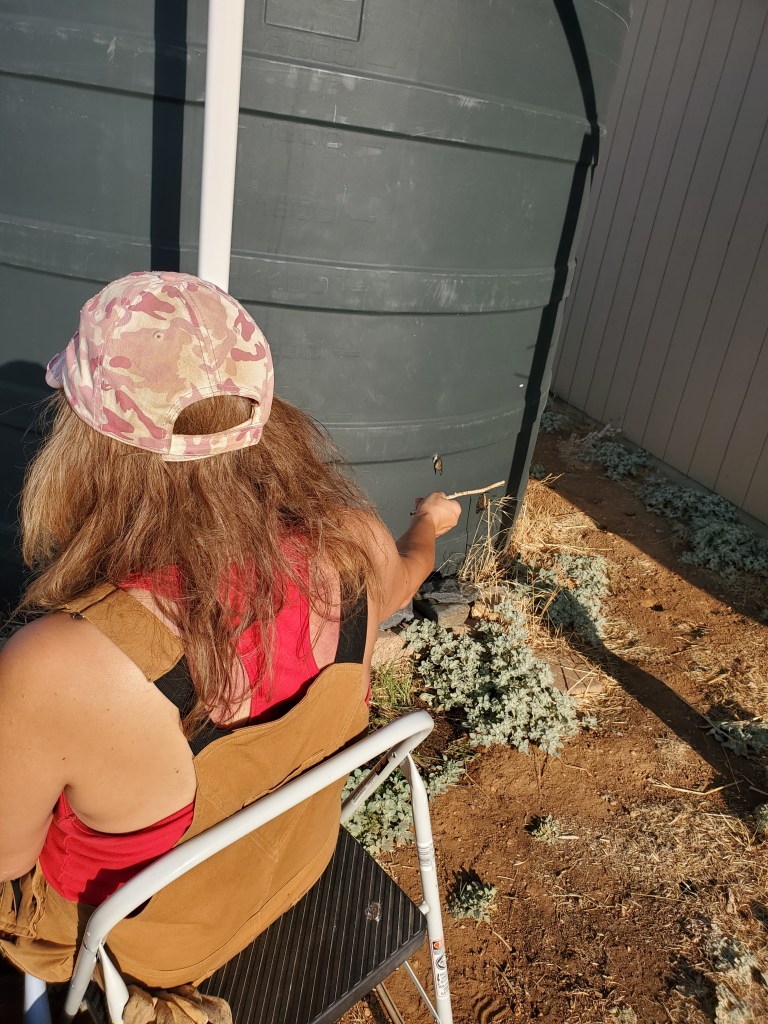

In total, there were 11 confirmed chrysalises and caterpillars, with some other surprise monarchs I found drying off. If I add in the surprise monarchs, it brings the total to 14.
I tried to watch every birth, learning new things every time, like seeing how the chrysalis elongates two days before birth, the black color the day of birth, and the colors visible minutes before birth. I became a pro, yelling to whomever was around, usually David who was long since over all of this, “It’s going to blow!” David responding, “Cool,” and going about his business – if saying anything at all.
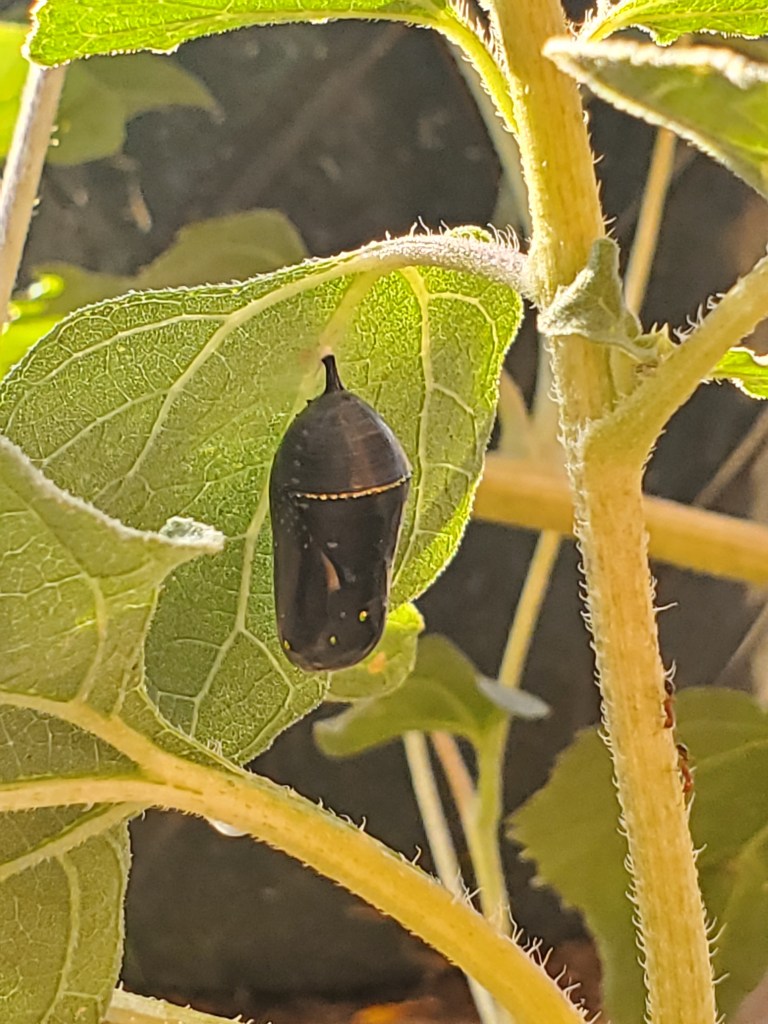

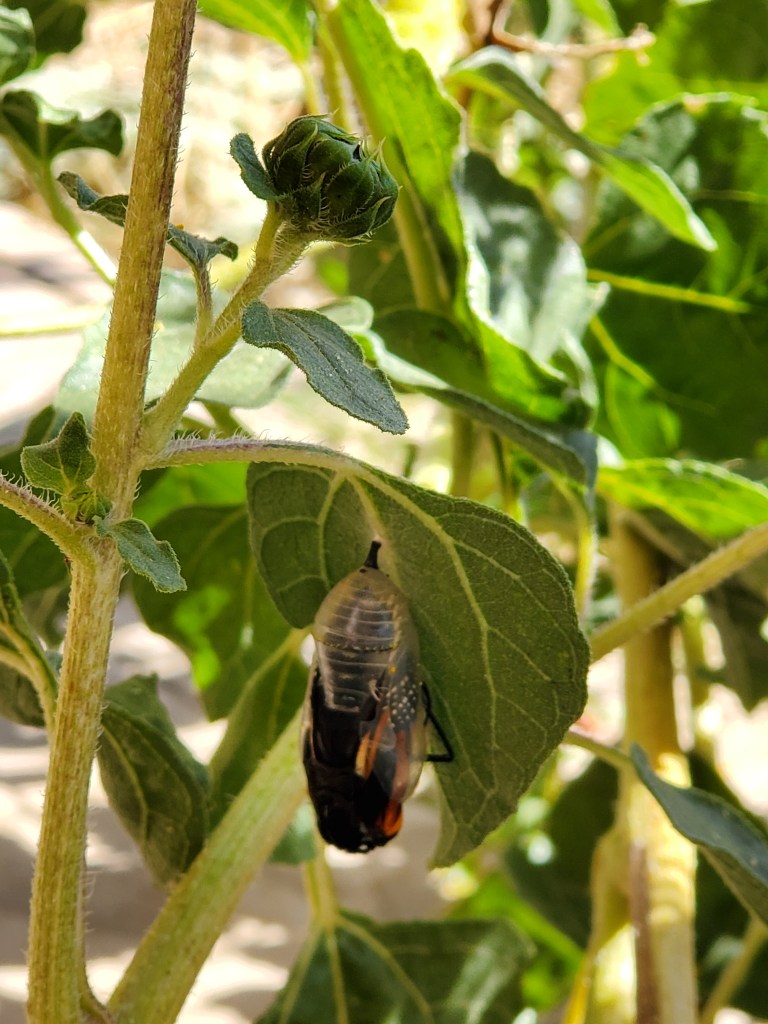
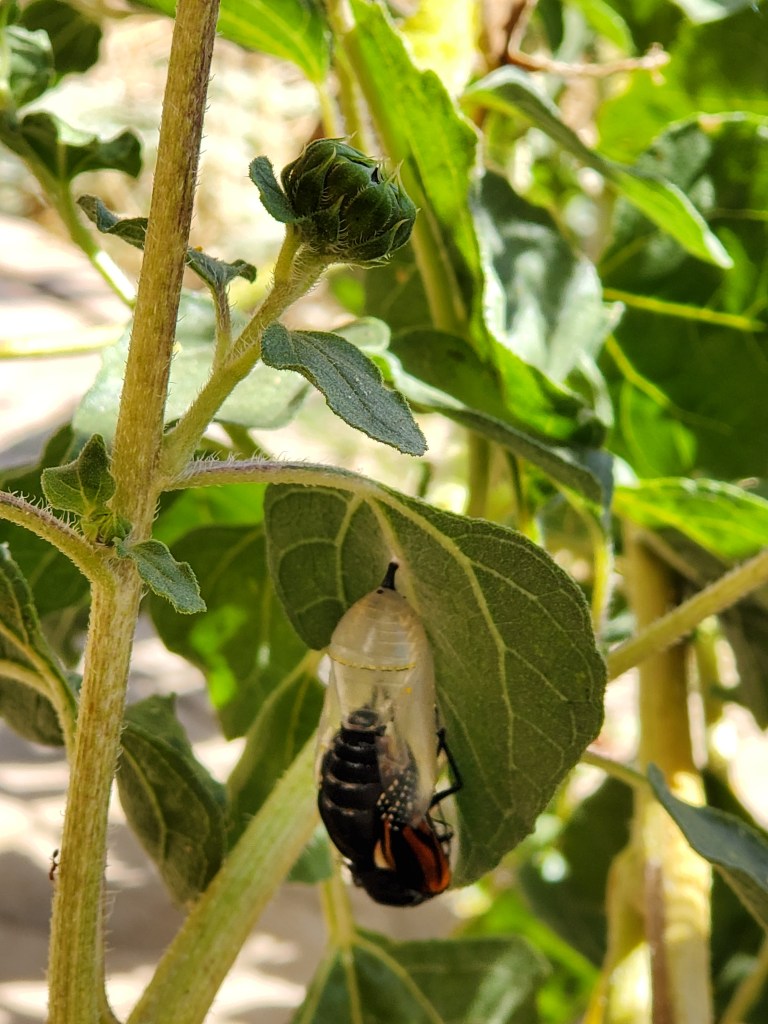


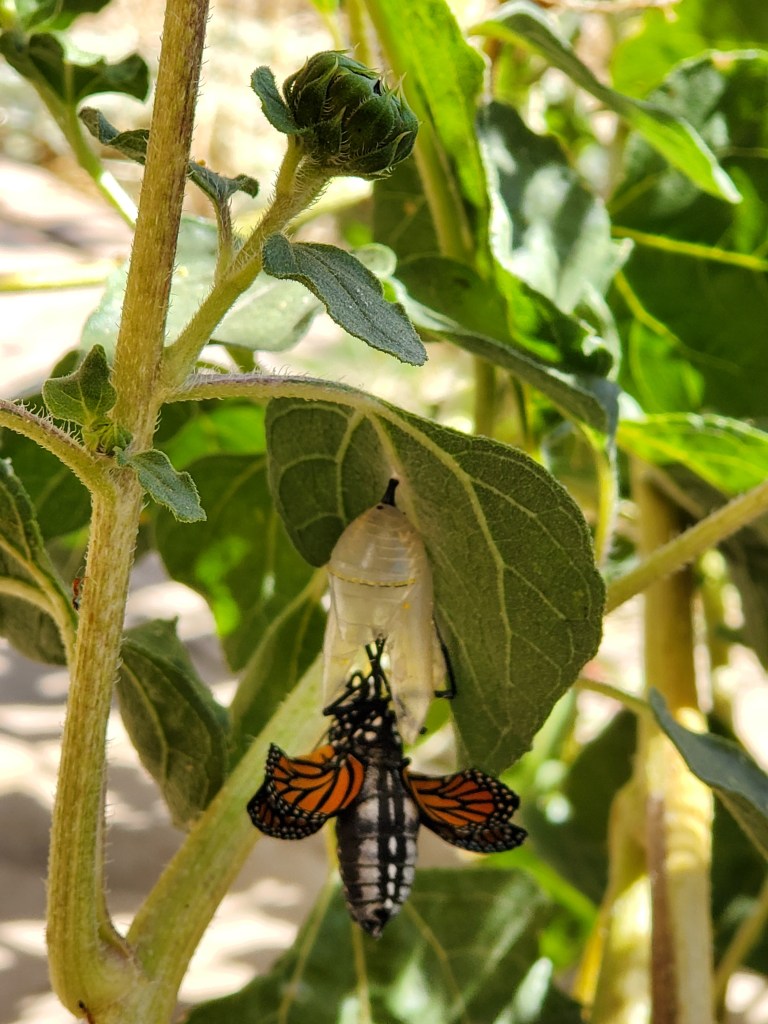
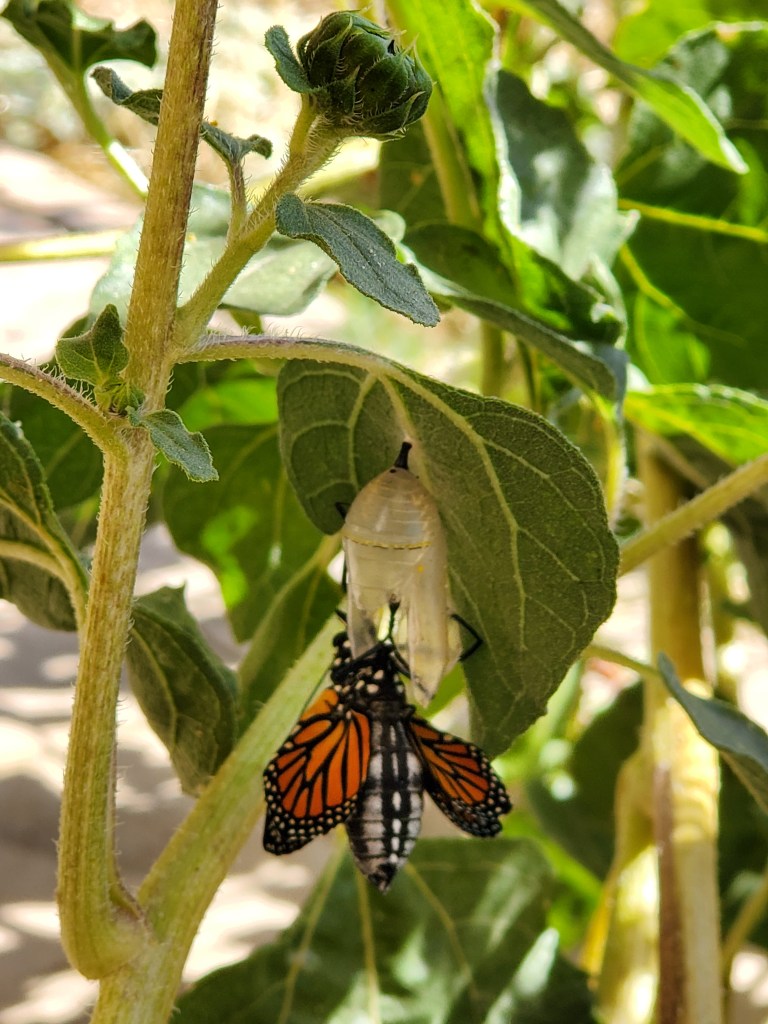
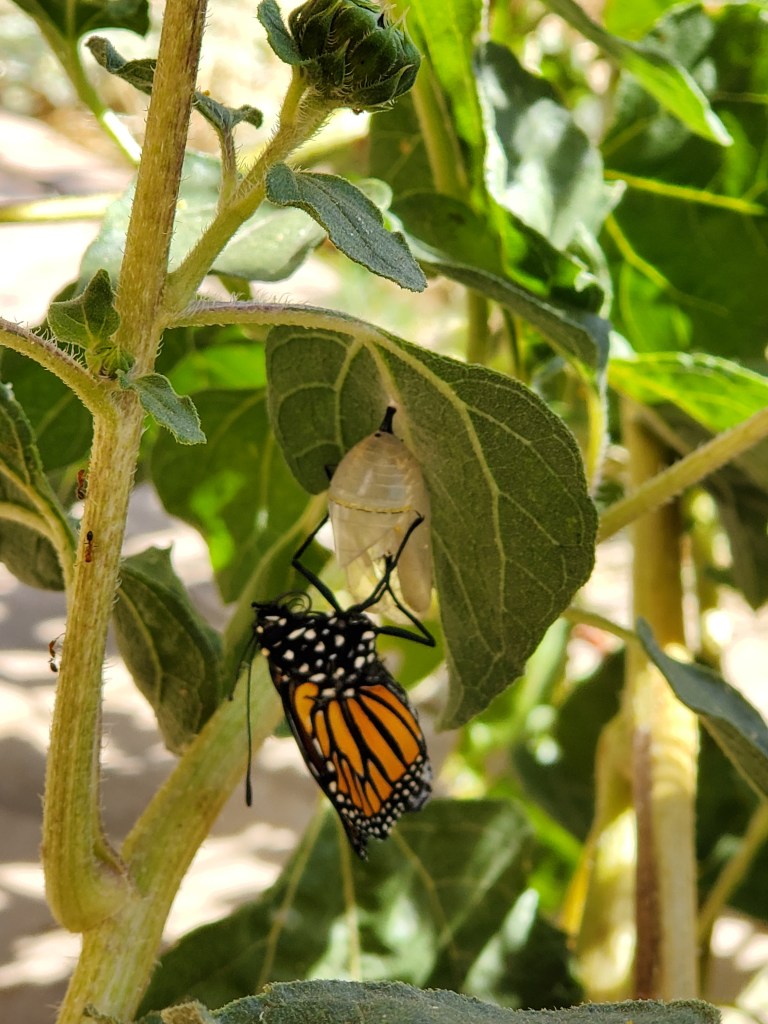
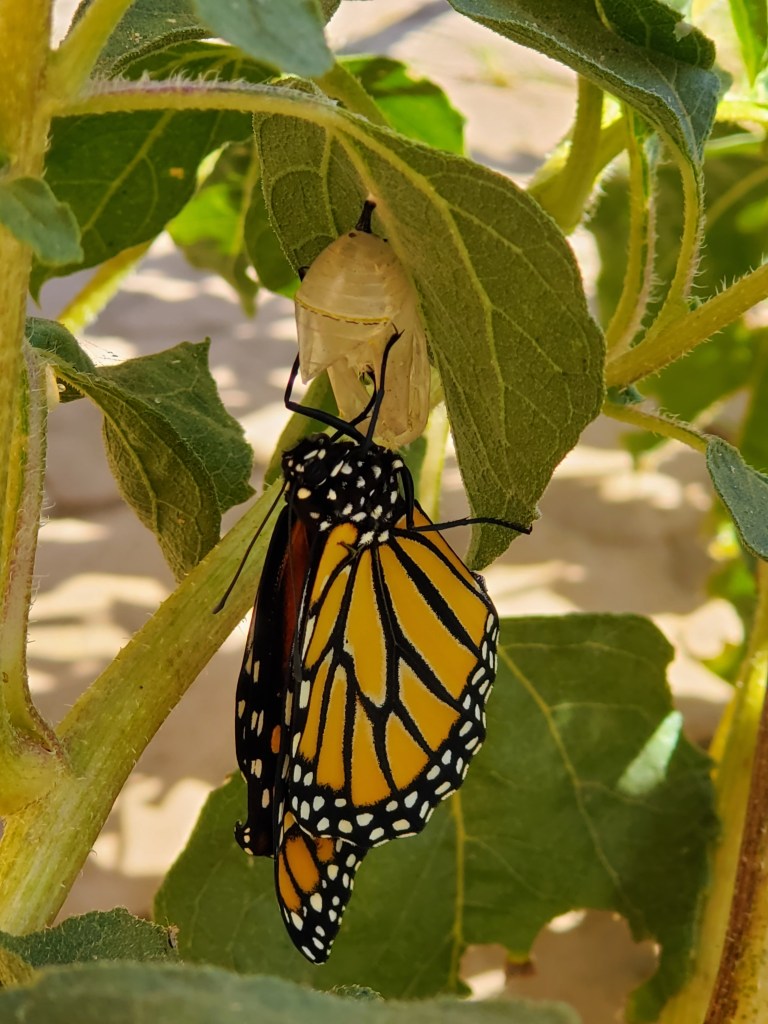
It never gets old watching the birth of a butterfly. It is a miracle every time. My friend Francisca was over one day when a chrysalis was about to open. She watched, excited like me, camera in hand, at the miracle before us. It is so nice to share this with people who care. The monarchs are great ambassadors.
At the end of the day yesterday, I watched as my final charge alighted. She circled around me well above my head, flitted here, flitted there, then flew off to the south where eventually she will make a turn toward the coast. I worry less about these babies; there is considerable habitat along her route – thanks to a clarion call for “all hands on deck” in planting milkweed and nectar plants from many organizations and individuals. It is your work, your compassion, your money donation turned to milkweed that will keep her path safer than it would have been only two years ago. The route is not without danger – cars, dragonflies, birds, pesticides, condos and golf courses instead of habitat – but there is much more habitat than there was. Thank you reader. Truly, thank you.
